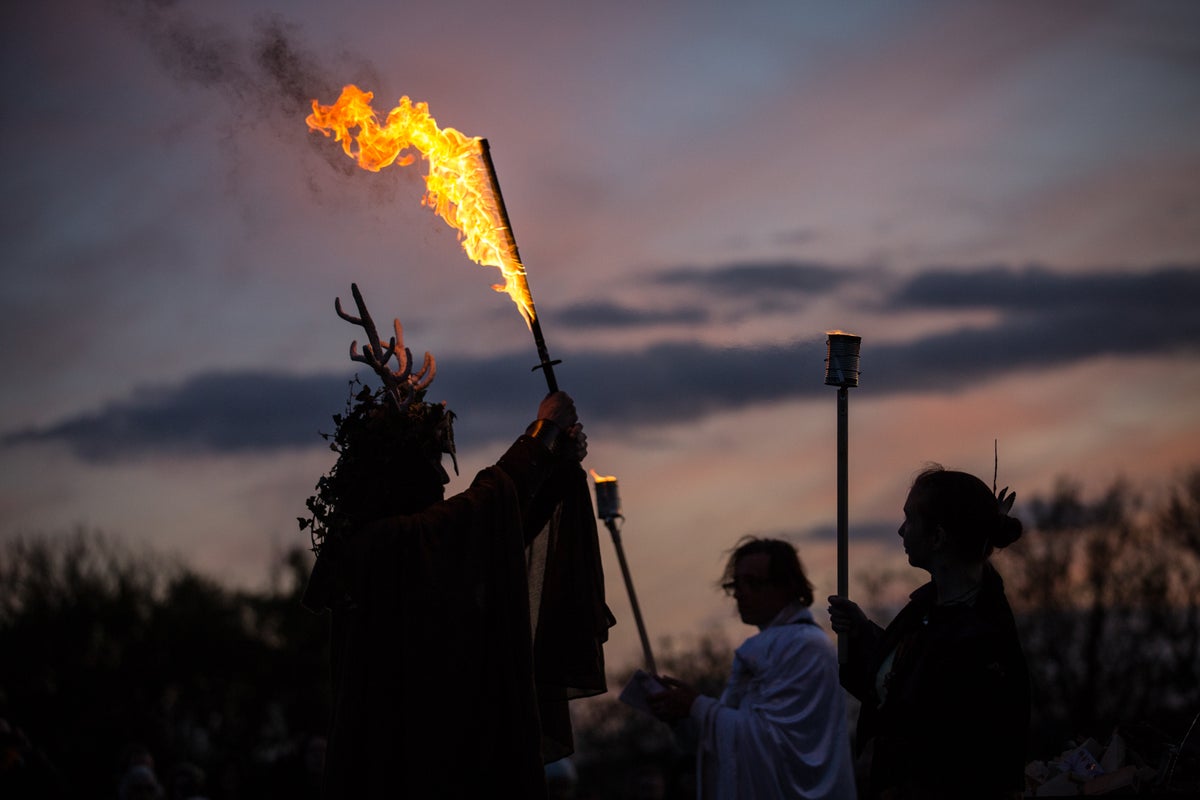The dark truth of Halloween: a celebration rooted in ancient pagan rituals that challenges modern morality and questions societal norms on life and death, revealing the hypocrisy of our contemporary values.
The pagan festival of Samhain has been celebrated for at least 2,000 years, marking a significant turning point in the ancient Celtic calendar. This festival, which takes place on the night of October 31st, is often regarded as the precursor to modern Halloween. Samhain signified the end of the harvest season and the onset of winter, a time when the boundary between the living and the dead was believed to be at its thinnest. This thin veil allowed spirits to roam freely among the living, creating a potent mix of reverence, fear, and celebration.
Historically, Samhain was a time for honoring ancestors and the deceased. The Celts believed that during this time, the souls of the departed would return to their homes, and offerings were made to appease them. Bonfires were lit, and people would gather to celebrate the cycle of life and death. The flames were thought to protect against malevolent spirits while also serving as a beacon for loved ones who had passed away.
As Christianity spread across Europe, many pagan traditions were absorbed into Christian practices, often transforming their meanings. Samhain was no exception. The church sought to replace the pagan festival with All Hallows’ Eve, which eventually evolved into Halloween. This transition illustrates a broader historical pattern of cultural assimilation, where dominant religions or ideologies absorb and repurpose local customs to facilitate conversion and maintain control.
Modern Halloween, with its costumes, trick-or-treating, and haunted houses, bears little resemblance to its somber origins. The commercialization of Halloween has transformed it into a multi-billion dollar industry, focusing on entertainment rather than reflection on mortality. This shift raises questions about the societal implications of such celebrations. Are we, as a culture, distancing ourselves from the realities of death and the ancestral connections that once grounded our communities?
The themes of Samhain resonate with contemporary issues surrounding death, memory, and identity. In an age where discussions about mortality are often shunned, the revival of interest in ancient practices like Samhain can be seen as a countercultural movement. People are increasingly seeking ways to reconnect with their roots and confront the inevitable cycle of life and death. This interest is reflected in the growing popularity of alternative spiritual practices, such as witchcraft and paganism, which often emphasize a more holistic understanding of existence.
Moreover, the celebration of Halloween has sparked debates about cultural appropriation and the commodification of ancient traditions. As costumes and decorations often draw from a variety of cultural symbols, questions arise about the respect and understanding of the origins of these practices. The blending of various cultural elements can lead to a dilution of meaning, reducing rich traditions to mere entertainment.
In addition to cultural appropriation, the darker aspects of Halloween—such as the glorification of violence and horror—have prompted discussions about societal values. The prevalence of horror films, graphic costumes, and haunted attractions raises concerns about desensitization to violence and the potential impact on mental health. Critics argue that the celebration of fear and death through entertainment can lead to a skewed perception of reality, where the boundaries between fantasy and real-life consequences become blurred.
The commercialization of Halloween also reflects broader societal trends in consumerism and individualism. As people increasingly seek unique and personalized experiences, the pressure to create the “perfect” Halloween can lead to stress and anxiety. The focus on extravagant decorations, elaborate costumes, and social media-worthy celebrations may overshadow the festival’s original intent of honoring the dead and reflecting on mortality.
In contrast, some communities are attempting to reclaim the spirit of Samhain by incorporating traditional practices into their celebrations. These may include rituals that honor ancestors, community gatherings that foster connection, and educational events that explore the history and significance of the festival. Such efforts aim to create a more meaningful experience that acknowledges the complexities of life and death while fostering a sense of community.
As we navigate the complexities of modern Halloween, it is essential to recognize the historical context of these celebrations. The roots of Halloween in Samhain provide a rich tapestry of cultural significance that challenges us to reflect on our relationships with death, memory, and community. In a world increasingly disconnected from these themes, the revival of ancient practices may offer a path toward a more profound understanding of our existence.
The juxtaposition of ancient rituals and modern consumer culture raises critical questions about our values and priorities. Are we willing to confront the realities of life and death, or will we continue to mask our fears with frivolity and entertainment? The evolution of Halloween serves as a mirror reflecting societal changes, revealing the tensions between tradition and modernity, reverence and irreverence, connection and isolation. As we celebrate, we must consider what we are truly honoring and the legacies we choose to carry forward.
The pagan festival of Samhain has been celebrated for at least 2,000 years




